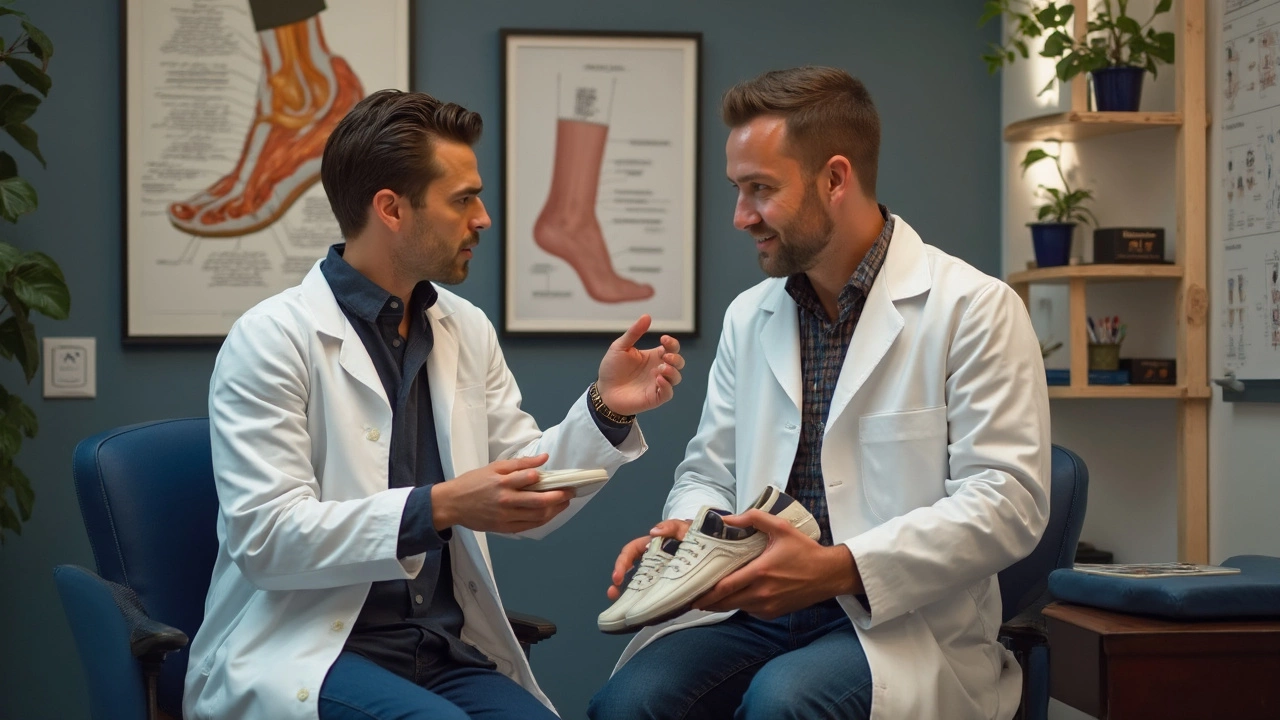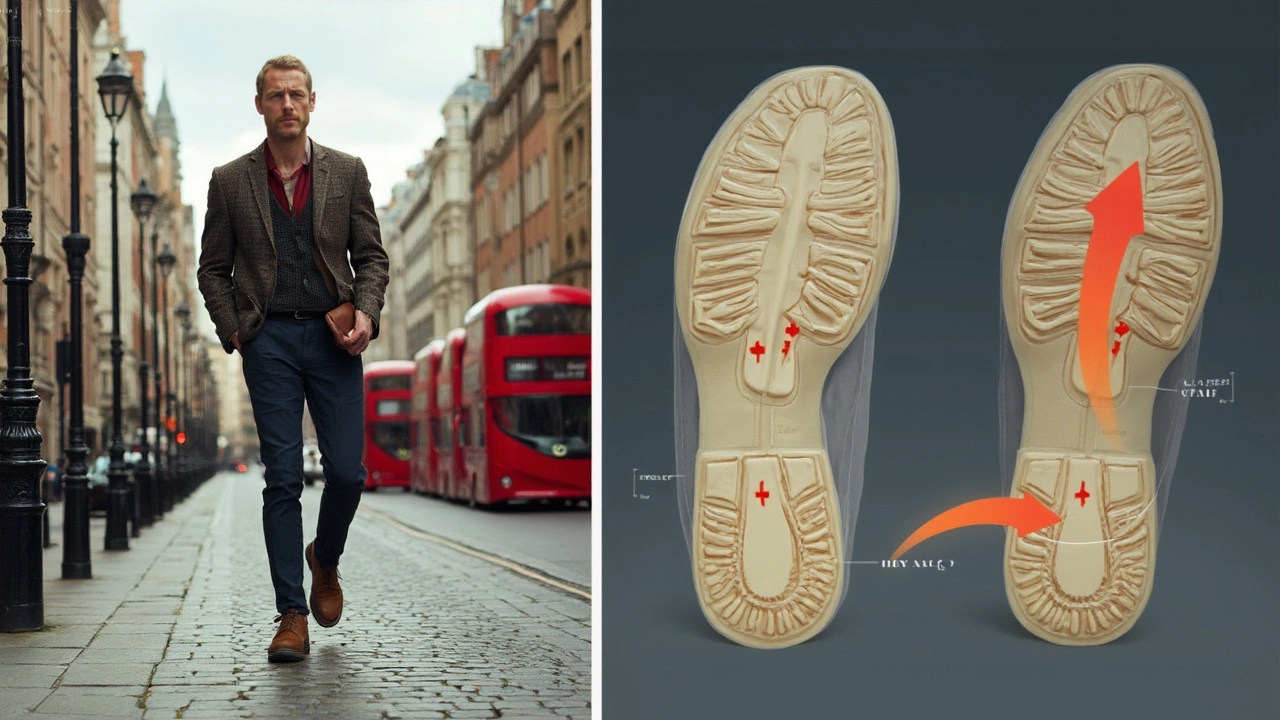Are Hey Dudes Bad for Your Feet? Real Facts About Comfort Shoes and Foot Health

- Cleo Fairchild
- 24 June 2025
- 0 Comments
No one expected shoes that look this laid-back to fly off the shelves, yet everywhere you go, there’s another pair of Hey Dudes shuffling on the pavement. Teens, dads, the girl behind the counter at your favourite bakery—everyone seems to have jumped on the bandwagon. The hype is strong, but here’s the burning question that’s not-so-quietly being whispered: are Hey Dudes secretly doing your feet dirty? Or are they just another Crocs-esque miracle for tired toes?
How Hey Dudes Became a Sensation… And What That Means for Your Feet
Let’s start with the obvious: the charm of Hey Dudes is all about ease. They are feather-light, slip right on, and come in every shade under the sun. That’s why you spot them on school runs, pub outings, and airport lounges from Bristol to LA. They took the market by storm, and it wasn’t sheer luck. People love how they sort of melt into the background—no drama for your feet, no breaking-in period, just out-the-door comfort. But here’s where things get tricky: comfort and support are not the same. And if you look closely at the advice from people in the know (I’m talking real podiatrists, like Dr. Emily Splichal who’s written plenty about shoe cushioning), shoes that are too soft or don’t grab your foot where it matters can be as bad as stilettos in the long run.
So, what are Hey Dudes actually doing for your foot health? The sole is usually made from EVA foam, which is why walking in them feels like a gentle bounce. But EVA isn’t magic—it’s just squishy plastic. There’s no real arch support built in, and for some models, the footbed is completely flat. Your feet don’t get the scaffolding that keeps them in a healthy position, especially if you’re standing, walking, or working on your feet for long hours. A quick look at online reviews echoes this: fans love them for ‘errands and lounging’, but plenty of folks say their feet ache if they wear them for a long shift—or when hiking up and down Park Street on a Saturday.
Support matters more than you might think. Based on National Health Service (NHS) records in the UK, a major cause of heel pain is plantar fasciitis, which is aggravated by shoes that don’t provide arch support. About 10% of people will experience plantar fasciitis at some point in their lives, and it’s not just runners. So, shoes like Hey Dudes might feel plush, but could they be making things worse for your arches? That’s a real risk, especially for people prone to flat feet or overpronation. By the way, this isn’t unique to Hey Dudes—loads of slip-on shoes have the same problem. But it matters because the popularity of these shoes means more people might trade support for comfort without realising the toll it takes.
Another thing to clock: Hey Dudes use stretchy fabric, so they adapt to most foot shapes. Great for rookies, but risky for people who need the shoe to hold them in place to avoid rubbing, blisters, or rolling an ankle. And when the shoes wear out (yep, those soles do flatten after months of beating around town), you get even less ‘bounce’ with every step. That’s why, if you’ve noticed your favourite pair feeling a bit ‘dead’, that’s your cue to shop for new ones.

Foot Health, Shoe Construction, and What Science Actually Says
Shoes are more than just a fashion choice. They’re your foundation for every step, whether you’re nipping down Gloucester Road or chasing your kids through the park. So, does the easygoing style of Hey Dudes really do what your feet need—especially if you’re walking a lot every day?
Let’s get nerdy (in a good way). If you strip it down, the main components of a supportive shoe include a contoured footbed (for your arches and heel), a firm sole, a roomy toe box, and upper material that breathes but doesn’t stretch too far. Hey Dudes are famous for their featherlight uppers (often woven cotton or polyester), but that flexibility means your foot can slide around, losing support where it’s most crucial. Also, the removable insole is usually just a thin layer of foam—nowhere near the science-backed orthotics designed to minimise injuries. If you overpronate (roll your foot inwards with every step), or have a job that keeps you on your feet, the lack of control can be an issue.
What about the stats? According to recent data from the British College of Podiatry (2023), nearly 20% of people who brought in Hey Dudes to the clinic for evaluation complained about heel or arch pain. That’s not a slam-dunk against the shoes—plenty of people are fine—but it tells you there’s a pattern. Flip to a study from the International Journal of Podiatric Medicine (vol. 29, 2022), where researchers compared foot stress in popular casual shoes. Hey Dudes had ‘low to moderate’ support scores; trainers and decent walking shoes consistently outperformed them.
There’s a table here to break it up and show how Hey Dudes stack against some regular shoe contenders:
| Shoe Type | Arch Support | Cushioning | Breathability | Slip Resistance | Flexibility |
|---|---|---|---|---|---|
| Hey Dudes | Low | High | High | Moderate | Very High |
| Running Trainers | High | High | Moderate | High | Moderate |
| Classic Loafers | Moderate | Moderate | Moderate | Low | Low |
| Work Boots | High | Moderate | Low | Very High | Low |
Hey Dudes win points for lightweight breathability, and nobody’s arguing with that ‘walking on clouds’ feeling. But strength of support? They're lagging. And that matters if you’re not just popping to the shops but actually walking all over Bristol (or wherever you are).
If you’re mostly wearing them for short trips or casual days, the risks are pretty low. They aren’t likely to *cause* problems in people with neutral arches and good biomechanics. But—you knew that was coming—if you already suffer from plantar fasciitis, flat feet, bunions, or need a shoe that keeps everything aligned, you’d be better off with something that offers more structure. Compared to trainers that are specifically designed to handle shock and ankle rolling, Hey Dudes are a bit like taking a bike with no brakes down Park Street: fun at first, but risky.
So, what can you do if you’re sold on the style? Orthotic insoles could be your new best mate. Podiatrists often recommend swapping out the original insoles for ones with real arch and heel support. Superfeet Green, for instance, gets a lot of praise in online forums and by professionals. Just double check your chosen Hey Dudes have enough space to fit them—you don’t want to end up squashing your foot into a too-tight space, which comes with its own batch of problems (blisters, anyone?).
Another tip—for those who put real miles on their shoes: alternate what you wear. Don’t make Hey Dudes your daily signature if you’re walking a lot. Use them for what they’re built for—quick errands, commutes, holidays, or downtime. For the heavy work, keep a good pair of supportive trainers on standby.

Are Hey Dudes Ever a Good Choice? How to Wear Them Safely
Here’s where things get practical. Maybe you love Hey Dudes so much that the thought of giving them up is a dealbreaker. The good news is, you probably don’t have to—if you use a bit of savvy. Matching your shoes to your daily activity is key, and you’d be surprised how much healthier your feet will feel when you rotate different pairs for different needs.
Plenty of people report zero issues with Hey Dudes—just as many say they’re the comfiest shoes they own (especially after a long day of standing). But as we said, what works for your neighbour doesn’t always work for you. If your job involves walking or standing for hours—like NHS nurses, teachers, or baristas—swapping to something with more support will pay off. Fashion-wise, they pair with everything, and in summer heat their breathability is a godsend. Just be honest with how much time you’re spending on your feet, because the issues don’t show up overnight. They sneak in with things like aching arches, sore heels, or new calluses that weren’t there before.
Here’s a quick list of who should hit pause before going full-on with Hey Dudes:
- Anyone with diagnosed flat feet or overpronation
- People with a history of plantar fasciitis or heel pain
- Those who need to wear orthotics
- If you stand or walk for more than four hours straight most days
- Kids or teens who are still growing
For everyone else? Enjoy, but check in with your feet. Pay attention if new aches crop up. If you want to step up your Hey Dude game, here’s what helps:
- Replace insoles with podiatrist-approved orthotics
- Rotate your shoes (don’t wear the same pair every day)
- Replace pairs every 6-12 months, especially if you notice the soles flattening out
- Make sure you’re buying the right size: a loose fit may cause sliding and blisters, while too tight compromises all comfort
- Wear thicker socks if you experience rubbing (bonus: helps with odour, too)
And just so we’re not all doom and gloom about relaxed kicks, here’s a real-world hack: some people who work in offices have switched to Hey Dudes as a ‘commuter shoe’, swapping into more supportive trainers or work shoes for the rest of the day. That way, you get the best of both worlds—comfort for the boring bits, proper support when it counts.
So, are Hey Dudes bad for your feet? Not necessarily—but they aren’t the right fit for every foot, or every job. Treat them more like a guilty pleasure than an everyday essential unless your podiatrist says otherwise. And your feet? They’ll thank you later by carrying you through the wild streets of Bristol (or beyond) without complaint.


